A magnetic headline is one that attracts, one that draws the reader in, one that stops people surfing past and makes them click.
If your content does not have a magnetic headline in this noisy, hyper social, online world, it will not matter how good your content is on your travel blog or travel website.
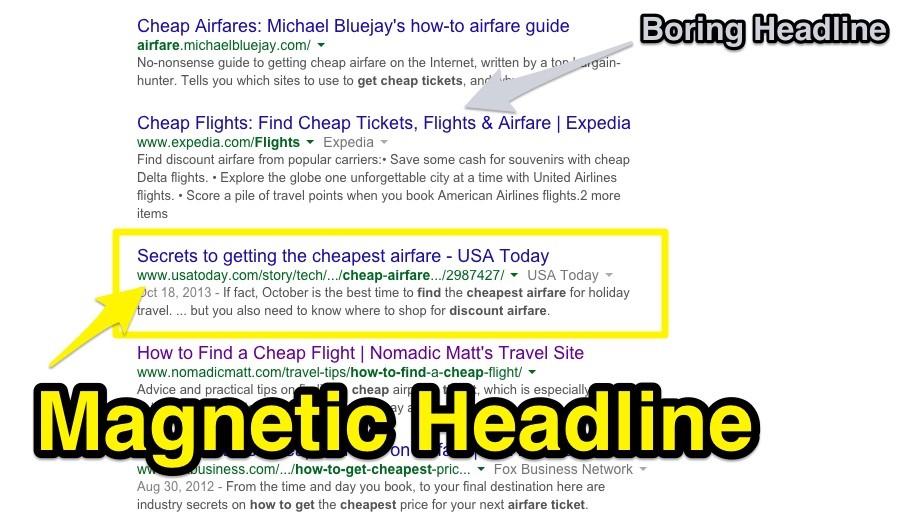
If the headline does not cut it, it will not get viewed.
- It will not get Tweeted.
- It will not get links.
- It will die of loneliness.
What Makes a Magnetic Headline?
A magnetic headline in the travel sector is no different to a magnetic headline in any sector. It has to do the same job.
- Get attention
- Attract
- Get the reader to click thru
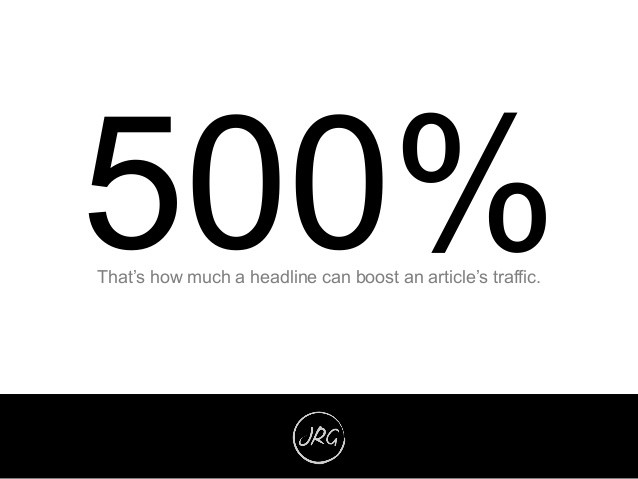
Source http://www.slideshare.net/jrick/writing-for-the-web-19059032
Creating magnetic headlines is a simple process. You take the keywords and you put it through the meat grinder and hope a tasty sausage pops out the other end.
By applying various, known, headline types to the basic keywords you can quite easily build up a good sized list of potential headlines.
In creating a nice list of potential headlines you get to explore themes you may not have thought of when trying to create that perfect headline first time. Plus you get to build up a nice file of headline ideas.
The trick is to let it flow, but within the parameters of the headline type and the supplied keywords.
The aim in making a headline magnetic is simply to make it the most attractive thing on the page and induce a desire for the reader to click thru and gorge on the delicacy that is the body of the article.
In trying to create the best headlines within the travel niche, we should first look at the problems that such headlines should address and what keywords they throw up.
Finding the Top Travel Industry Keywords
What Keywords Work in the Travel Sector?
Research from Stickyeyes, a UK digital marketing agency found that 50% of search terms are dominated by 13 words.
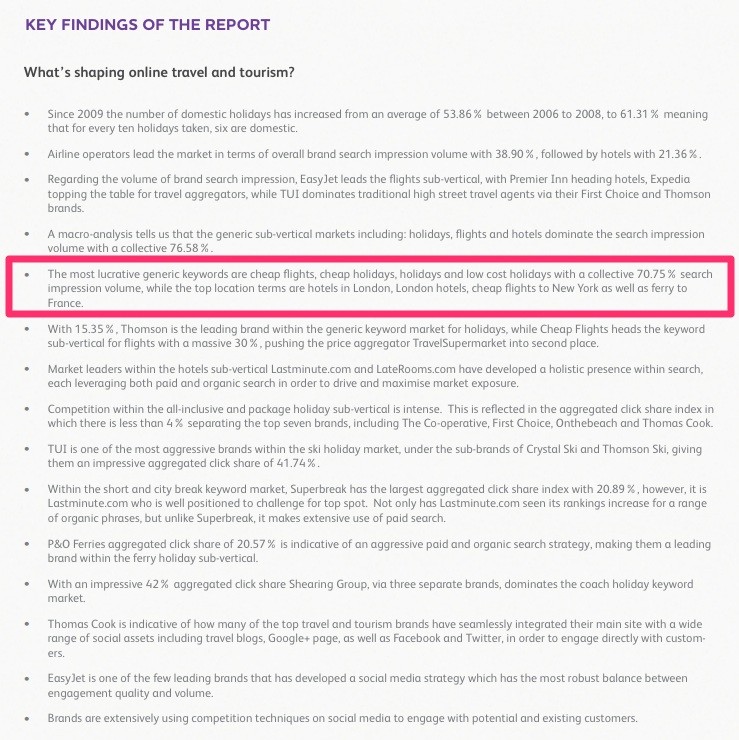
Generic top search terms are
Cheap Flights
Cheap Holidays
Holidays and Low Cost Holidays
We can note from this that cost is a crucial factor in what people search for. Not that every headline should be defined by this, but this is the main aspect of what is driving search based terms and so we define from this that a headline which provides such a solution to a cost related search term is more likely to be more magnetic than one that is not.
“Cheap”, makes you click.
Seems obvious, but always good to have researched data on hand to back up your opinion.
But does “cheap” make them link or do you need more editorial type content to do this. As it could be perceived that content focused on cost would not get links. Whereas an editorial piece
Let’s look at a travel blog that produces great headlines in this area and if the headlines work.
A search for “how to find a cheap flight” returned the following result.
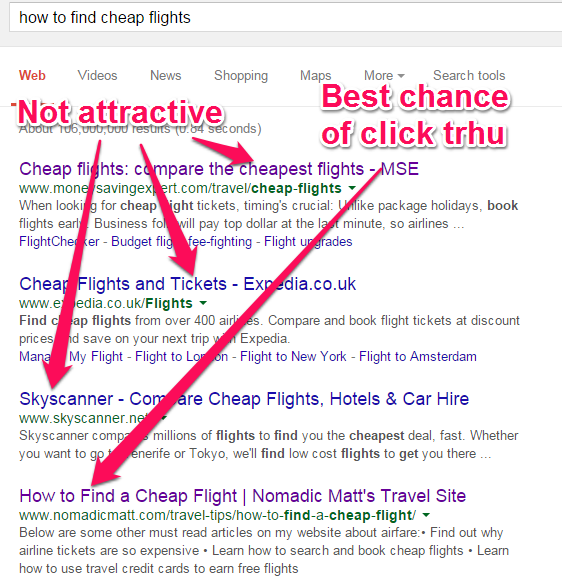
A perfect headline: “How To Find a Cheap Flight”
If you are in the cheap flight niche, this is one headline and keyword phrase which you cannot ignore. Even though the phrase is extremely competitive it is worth trying for as you may get lucky. If you don’t try to rank for such a keyword phrase, you definitely will not have a chance to rank for it.
We see from the SERPS that the site came 4th, and performing a visual audit we can see that the site in question is highly clickable as the page mirrors the search term, whilst the other results are more commercial branding signals, which is great if those brands are attractive and the searcher is of the mindset that such a brand would do best to provide the best solution to the search phrase.
According to the cognitiveSEO tool the site has:
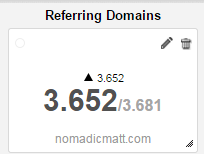
We see from the number of links that it is an authority site and is currently attracting links.
Let’s look at individual pages, again using the cognitiveSEO tool (like we would use any other)
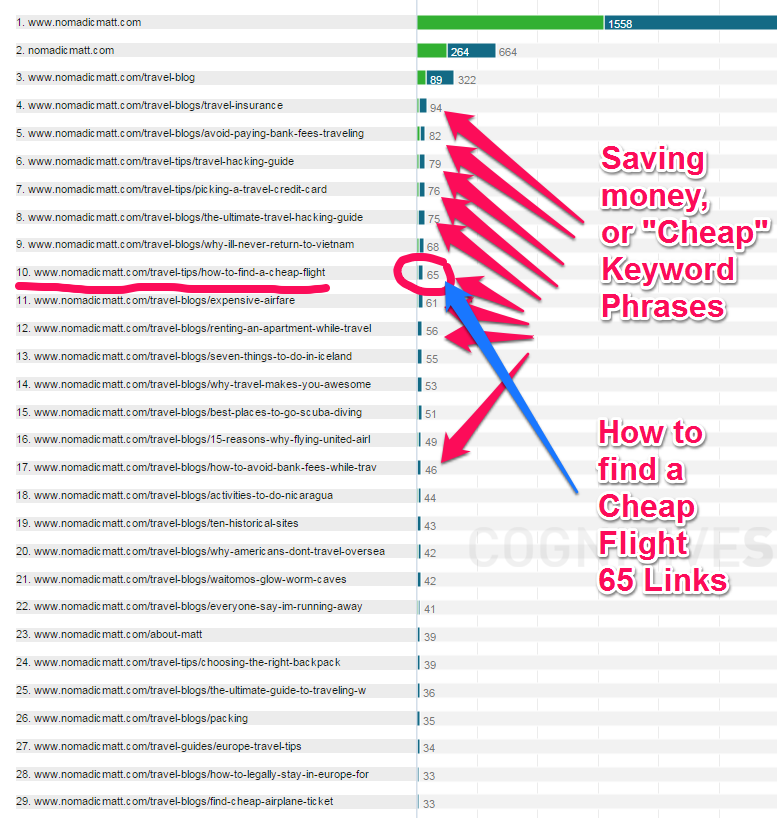
The top pages seem to back up the Stickeyeyes review, that finding the best deal or the cheapest deal is more interesting to searchers and as we note here, linkers than other keyword phrases.
We Have the Keywords That Work, Now What?
Now that we have defined a bunch of keywords that will induce a good click thru rate and are clearly able to provide a solution to the readers problem. We need to look at the actual construction of such headlines.
In an article about How to Write Magnetic Headlines, I outlined the process of how to take a few words and create multiple alternate headline possibilities. The original keywords were “money” and “diet”. We will replace those with our keywords and come up with some fresh, interesting ideas.
All the time being mindful that we are not looking for the perfect headline, (even though we may find one) but we are looking to create an extensive list of actionable headlines where we can chose the best performing out of a bunch.
We take our travel keywords and get more specific, and chose two keywords to play with..
The keywords we are choosing to building headlines around are:
- Cheap
- Flights
I am going to keep the original “money”, “diet” keywords that I used in the original article so you can see the process at work more clearly. As you go through this remember that creativity is a process and it does not come from thin air.
The Magnetic Headline Creation Process
Making a clear statement
“You can save money by eating less”
“You Can Travel More Cheaply If You Spend More Time Looking Online”
“Travel Cheap Save Money”
Clear, straight forward, to the point. You know what you get with this headline.
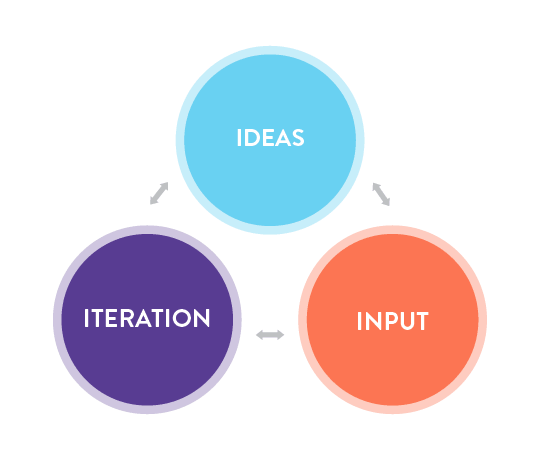
Source: http://blog.intercom.io/wp-content/uploads/2013/10/III.png
Not the greatest headlines in the World, but we have to start somewhere. Remember, headline writing is a process, you do not simply pull the perfect headline out the hat at the first attempt. In many ways it is a wall and you have to build the foundation and then a brick at a time, in the hope that you eventually get to the headline you need.
A “how to” headline can increase the power of a clear statement and indicate the promise of learning about a benefit
“How Eating Less Can Save You Money”
We see from our earlier example.
“How to Find a Cheap Flight”, represented the closest to perfection of a magnetic headline in the niche.
We can modify this by simply replacing the word, “find”.
How to Book a Cheap Flight”
Introduce some slang.
“How to Snag a Cheap Flight”
Make it a bit mischievous.
“How to Steal a Cheap Flight”
You could take that thinking further. Making a headline contain something that can be considered taboo is very effective in getting the headline noticed. It appeals to our primal brain in that,
“How I Fooled an Airline into Giving Me a Cheap Flight”
This is interesting as it is from the personal perspective and so more authentic. It has a David vs Goliath element that appeals to the anti-corporate in us and there is something illicit about fooling a company and getting an edge over them.
The “illicit” aspect is important as it creates a narrative which makes us curious, we desire to know more so we click thru.
You can increase the power further by adding a dash of personal authority
“How I Ate Less and Saved Money”
This addressed in the above, but we could explore it in a simpler way.
“How I Buy the Cheapest Tickets Every Time I Travel”
Personal authority gets noticed, also by referring to the fact that the writer is able to do this every times suggests there is a process to this which could be used by others.
Introduce an incongruous juxtaposition
“An incongruous juxtaposition of the seeming unrelated,” is a powerful technique in headline writing and is used a lot:
“How Eating Less Helped Me Buy a Tiger”
The term “incongruous juxtaposition”, is I admit a mouthful and itching to be added to the “Marketing Gobbledygook Lexicon”, but it’s a really powerful concept and you see it used in effective headlines all the time.
But let us use it for our travel keywords.
“By Paying More I Was Able to Get Cheaper Tickets”
Already we are setting up for cognitive dissonance here, where no two opposing facts can exist in the brain at the one time so it is forced to choose. The way the sentence is constructed pushes the reader to choose that money was saved and that there is some trick to the way it was done, inducing curiosity and we know how powerful that is.
Which leads us to:
Introduce curiosity
The headline should not reveal all and should leave a question in the mind of the reader. The question here would be, “What was it the wife needed?”
“How Eating Less Let Me Give My Wife What She Needed”
“How My Dog Helped My Buy a Cheaper Holiday”
It may be easy to write such a headline, but of course the skill must be that the headline has to promise what the body content is about. So unless such a headline is followed up with a satisfying solution in the body content, you will have wasted any click thru success.
Take what you see works elsewhere and introduce it
It may work, it may not, but this process is about trying as many themes as you can. Have you seen those low quality diet ads around the place, “one weird trick”, they use it because it works:
“One Weird Trick Had Me Eating Less and Saving Money”
”One Weird Trick to Get a Cheap Flight”
It feels very cheesy and indeed the original campaign that used this method extensively always left a smear of slime on the psyche every time I saw it. It is scraping the bottom of the barrel and to use such methods means it will position your brand in a certain way for the reader. But if such things aren’t a concern then a method such as this is worth considering.
Numbered headline
Also known as the divisive, listicle. Applying a number to the headline is a common, some would say overly used method of headline writing. Your task is not to worry about the whole body of headline writing and how the art of headline writing is perceived, it is to make this specific headline work and if adding a number and turning the article into a listicle works in this particular instance, then that must be what you do:
“23 Ways Eating Less Can Save You Money”
“23 Ways to Get the Cheapest Flight”
The listicle works well for a problem like this because it is able to present that 23 actionable tips which you can use that will provide a solution to your problem. Again, the content has to be able to deliver and if it does actually solve the problems of getting a cheap flight, then it can prove to be a very powerful piece of content.
Switch the elements in the headline
Same meaning but sometimes it scans better, always worth trying to see if it works:
“23 Ways to Save Money by Eating Less”
As I said before, good headline writing is about a process, not the instant delivery on a silver platter of an effective headline. Sometimes simply moving the words around can achieve something interesting.
“How Cheap Flights Cost Me a Fortune”
Make it exclusive, but leave out enough to induce curiosity
“23 Ways to Save Money You Will Not Read Anywhere Else”
“23 Ways You Can Get a Cheap Flight You Will Not Get Anywhere Else”
Introduce the promise about a personal story into the headline
Making the headline about a real person gives it more power. There is also a curiosity element. We need to know why the girlfriend left:
“23 Ways I Can Get My GF Back and Save Money”
”The Secrets I Learned in Getting a Cheap Flight”
These confessional stories evoke the feeling of someone who is speaking to you of unique and valued information.
You can mix in the numbered theme quite easily with this one, discovered element
This is why this process is powerful, you may start with something quite bland but as you work through the stages you develop stronger ideas. This is why it is useful to write down ideas that you know you cannot use, but can move you forward to a headline you can use:
“23 Reasons Why Eating Cat Food Will Save You Money”
Conclusion:
It’s important to find the correct seed words that will induce links and social shares, we use the cognitiveSEO for this as it finds more links that probably most other backlink tools.
If you work in your niche regularly, you should already know which keywords are going to work.
After you gather your keywords, work to build up a file of headlines that use different themes and come at the problem from different angles. At the end of the process, it’s up to you to decide which ones to use.
If you would like another opinion. Print out all the headlines, about 50 at a time and put them in front of someone telling them they have 10 seconds to choose 3 of the best headlines. The reason for this is to recreate the situation when a reader is flying through headlines and content on social media. You need headlines that stand out in a crowd at the very least.

 Site Explorer
Site Explorer Keyword tool
Keyword tool Google Algorithm Changes
Google Algorithm Changes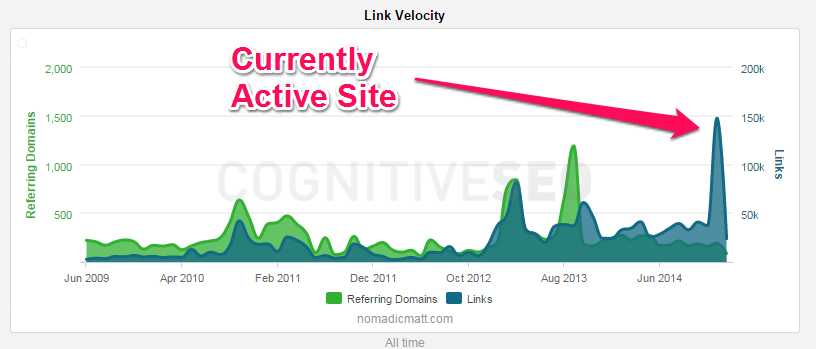


Creating eye catching headlines has become a science of sorts with so many best selling eBooks written on the topic. You have done well by focusing on a niche. I found that I have always been attracted to the headlines like “How to survive in Hawaii on a shoe string budget” and most of the people do get drawn towards blogs which promises to make their dreams of travelling to their favorite haven at cheap rates true.
Attractive and clickable headline sure is important to get clicks, but for big brands, I think they will prefer to have less attractive but credible and trusted headline that will convert into sales. It is also kinda hard to add keywords into an attractive headline.
Great tips about the power of headlines. Unique titles will attract attention.